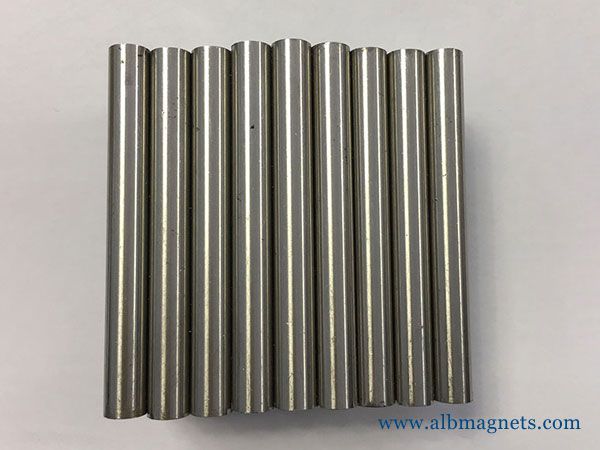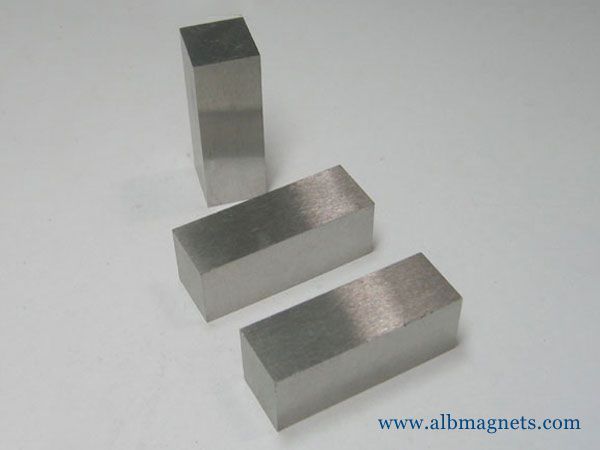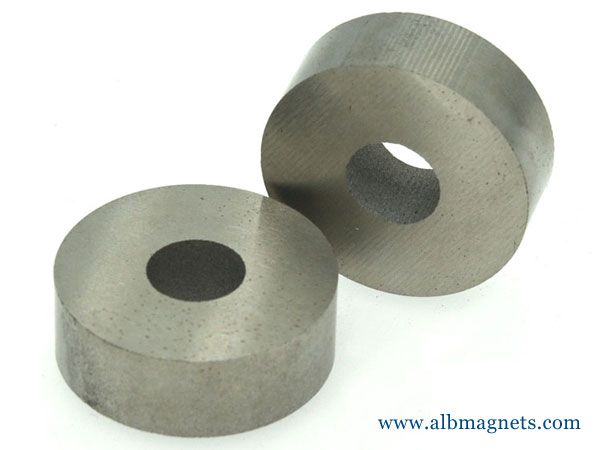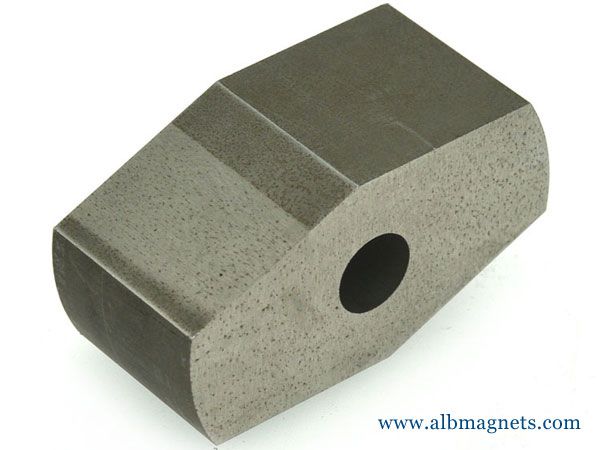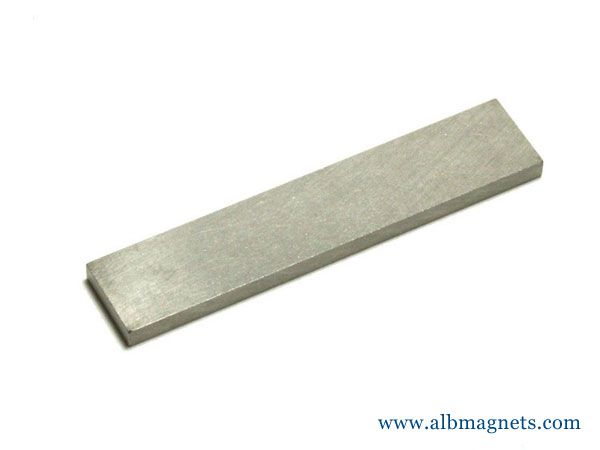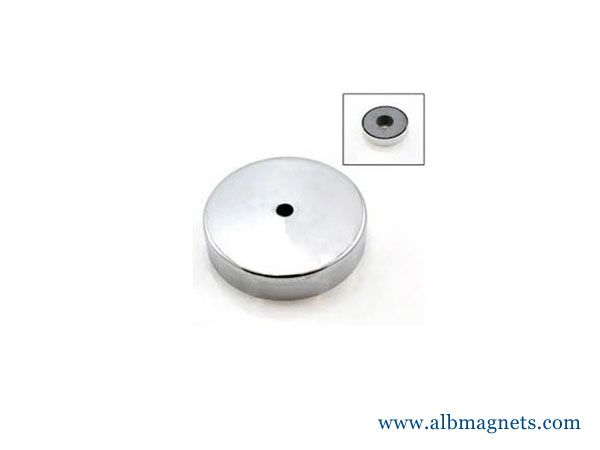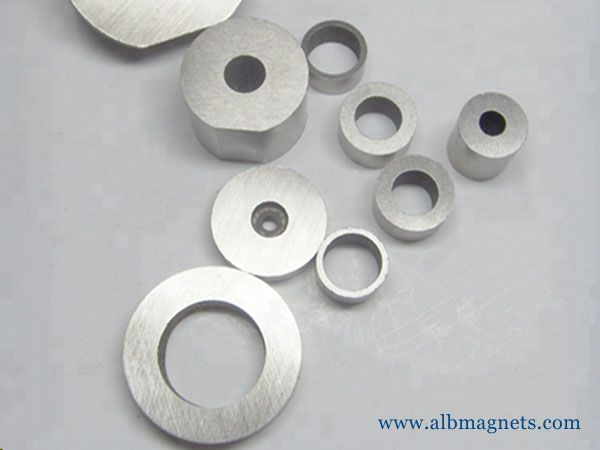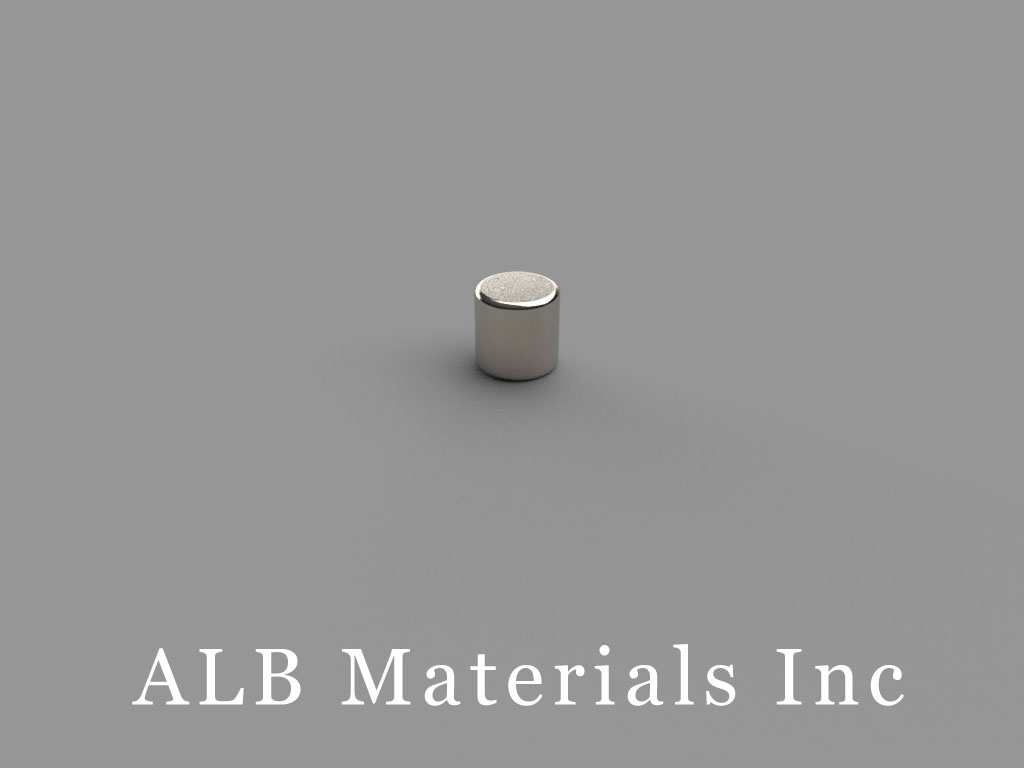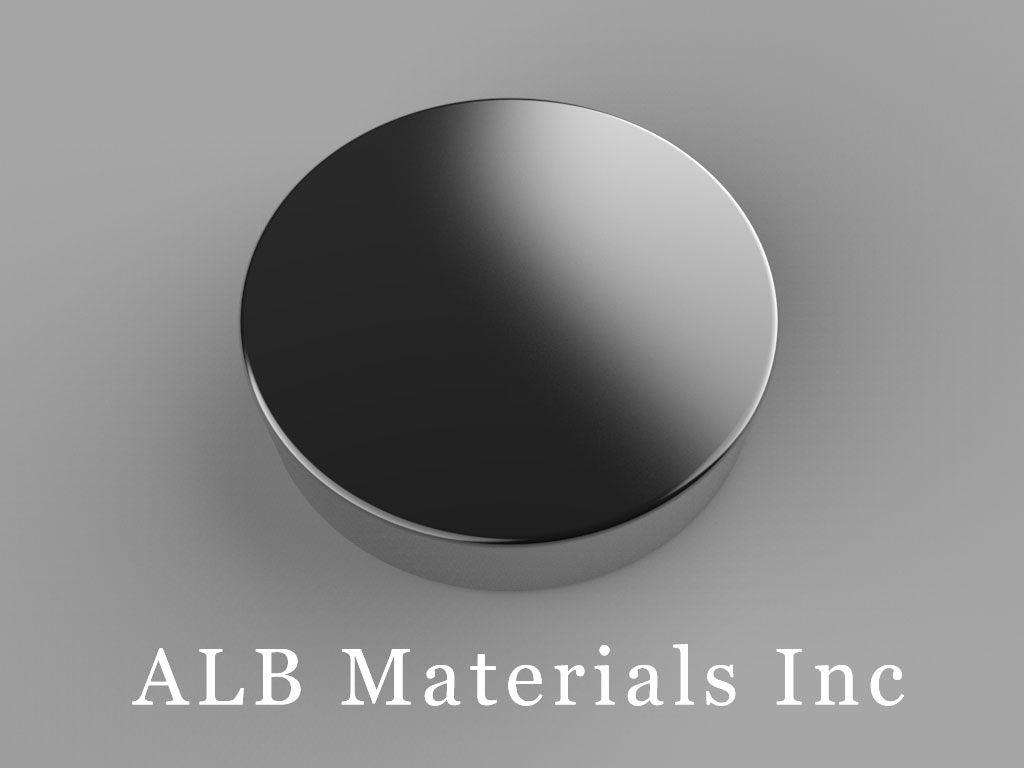401 Ryland St. Ste 200-A,
Reno, NV 89502
United States
E-mail: sales@albmaterials.com
- D2x5mm Neodymium Magnet, 2 x 5mm Cylinder Magnet
- D-D50H12.5-N38 Neodymium Magnet, 50x12.5mm Disc Magnet
- B844 Neodymium Magnets, 1/2 inch x 1/4 inch x 1/4 inch thick
- D-D12.7H6.35/P Neodymium Magnet, 12.7x6.35mm Disc Magnet
- D60x25mm Neodymium Magnet, 60 x 25mm Disc Magnet
- D95 Neodymium Magnets, 9/16 inch dia. x 5/16 inch thick
- SB443-OUT Neodymium Magnets, 1/4 inch length x 1/4 inch width x 3/16 inch thick, with step OUT
- RA22CS-S Neodymium Magnets, 5/8 inch od x 1/8 inch thick with countersunk hole for #6 screw
- MMWR-B-X0 Stainless Mounting Magnets
- BX0C2 Neodymium Magnets, 1 inch x 3/4 inch x 1/8 inch thick
- TK-BLK Magnetic Thumbtacks
- BX0X01 Neodymium Magnets, 1 inch x 1 inch x 1/16 inch thick
- D-D9H1-N50 Neodymium Magnet, 9x1mm Disc Magnet
- B888PC-ORA Plastic Coated Neodymium Magnets
- BZ0X04 Neodymium Magnets, 3 inch x 1 inch x 1/4 inch thick
- DH23 Neodymium Magnets, 2/10 inch dia. x 3/16 inch thick
Custom Alnico Magnets
Custom Alnico Magnets-Alnico Magnets Manufacturer
Custom Alnico Magnets
Alnico Magnets for High-Temperature Applications
Alnico magnets can be used at very high operating temperatures and offer excellent temperature stability.
They have a high-magnetic remanence, and lower coercivity than other magnet materials.
Physically, they are less brittle than the neodymium, samarium cobalt and ceramic types of magnets.
Alnico magnets are manufactured through either a casting or sintering process.
Cast alnico magnets can be made into complex shapes, not possible to achieve with most other manufacturing techniques used for permanent magnet materials.
ALB Magnetics specializes in the technical design, engineering, custom manufacturing, assembly and testing of custom permanent magnets including alnico, and precision magnetic assemblies.
We routinely build technical magnet assemblies for high-performance applications - either as build-to-print or design-to-specification.
Alnico Magnet Applications
Alnico magnets are used in a wide range of applications, especially those that require the ability to withstand operating temperatures up to 1,000⁰F (540⁰C).
By comparison, samarium cobalt magnets can operate up to about 600⁰F (315⁰C), while neodymium magnets are limited to approx.
250⁰F (120⁰C).
From medical devices to aerospace components, military projects, electro-mechanical devices, industrial automation, and semiconductor equipment, we have trusted partners to businesses worldwide in these primary markets.
Alnico Magnet Design, Engineering & Manufacturing
• Technical Magnet Design & Engineering - Our core expertise is in technical design, engineering and custom fabrication of custom alnico magnets and magnetic assemblies, from prototypes to small and medium-size production runs.
• In-House Production Facilities - Our fully equipped in-house manufacturing & production facilities and dedicated assembly areas with class 1000 cleanrooms, enable us to provide complete turnkey solutions with shorter lead times, increased quality at all levels, and at reduced costs.
• Quality Planning & Assurance - We offer a full range of inspection and testing services using state-of-the-art equipment to ensure that our delivered products adhere to rigid industry standards, and to your specifications.
Our well-established QMS continuously evolves in order to meet today’s critical standards and to exceed our clients’ expectations.
• Licenses & Certifications - As a fully licensed and certified magnet manufacturer, we are ISO:9001:2015 certified, ITAR registered, and ROHS3, REACH compliant.
Click here to view our various certifications & compliances.
Your Custom Alnico Magnet Project - How Can We Help?
It's important to work with an experienced magnet engineering and manufacturing team for optimal magnet performance;
ALB Magnetics has over 60 years of accumulated knowledge and expertise in this specialty arena.
We are able to fully engineer magnetic components and assemblies for your specific applications using sophisticated FEA tools with magnetics, thermal and stress analysis.
Contact us today or request a quote to discuss your project’s specialty requirements.
Alnico Magnets Features & Characteristics
Grades & Materials - We carry a large inventory of licensed, alnico magnet materials in both standard & premium grades for reduced production and lead times.
We offer both cast and sintered alnico magnets in grades ranging from Alnico 2, to Alnico 5 & Alnico 8.
Visit our alnico magnet materials page for additional information and data sheets about this material.
Shapes & Sizes - Sizes for Alnico magnets range from small disc magnets 1/16” in diameter to large cast Alnico magnets weighing up to 500 lbs.
Standard shapes include disc, rectangular, channel, horseshoe, rod, and rings in different dimensional specifications.
Non-standard shapes can be custom fabricated to specifications from raw stock, and we can custom manufacture virtually any shape & size to your exact specifications.
Temperature Considerations - Alnico magnets offer the best temperature characteristics of all permanent magnets.
They can be used at temperature extremes up to 1,000⁰F (540⁰C), the highest temperature in which any magnet material can be used while retaining 90% of room temperature magnetization.
Manufacturing Methods - Alnico magnets are hard and brittle and are therefore prone to chipping and cracking.
Cast Alnico magnets may exhibit imperfections such as pores and voids common in cast materials.
Typical manufacturing methods for alnico magnet material involves a powdered metallurgical process using rigid steels or rubber molds.
Machining or drilling of alnico magnet material cannot be accomplished by ordinary methods and cutting or grinding should be done prior to magnetization.
We are fully equipped to machine these materials for your project’s specialty requirements.
Magnetizing & Assembly Considerations - Because of their low coercivities, alnico magnets require magnetizing fields of only about 3-kilo Oersteds.
Special care should be taken to assure that these magnets are not subjected to adverse repelling fields which could partially demagnetize them.
It’s therefore recommended to magnetize the material after assembly when combined with circuit components.
Handling & Storage - Alnico magnets are very strong and brittle and should be stored with “keepers” which close the magnetic field in order to reduce the risk of demagnetization.
However, if alnicos become partially demagnetized, they can be easily re-magnetized.
Turnkey Magnetic Solutions
From stock magnets to complex magnetic assemblies & electrical machines, we are a vertically integrated company providing complete turnkey magnetic solutions for virtually any type of magnetic application.
Engineering & Manufacturing
Engineering is at the heart of our business.
We are uniquely qualified in all aspects of technical engineering and deliver magnetic solutions that are optimized for functionality, lead-time, cost & reliability.
Quality Management Systems
IS0 9000 Certified since 1998, we have a well-established QMS that meets today's critical standards.
We build assemblies with multi-level Bills of Materials & our ERP, Planning, & QMS support these activities.
We offer custom Alnico assemblies using Arnold’s magnetic materials.
Primarily custom made to your specifications, sintered Alnico magnets are available in grades 2, 5, 6 and 8B and 8H.
We can manufacture your assembly completely in-house, making both the magnetic components and non-magnetic components, and assemble these parts allowing you to receive a completed sub-assembly.
Alnico permanent magnets are made up of alloys whose major constituents are iron, aluminum, nickel, and cobalt, though other elements (e.g., copper and titanium) may be included in minor amounts.
Grades of Alnico vary in cobalt content, which ranges from zero (Alnico 3) to 40% (Alnico 8).
Lower grades (2, 3 and 4) are unoriented in which magnetic properties are isotropic and equal in all directions.
Their magnetic output is relatively low.
Anisotropic grades (Alnico 5, 6, 8 and 9) are designed to produce high magnetic output in a specified direction.
Orientation is achieved during heat treatment, by cooling the product from a temperature of about 2000° F (1093° C) at a controlled rate, within a magnetic field which conforms to the preferred direction of magnetization.
Alnico 5, the most widely used grade, delivers energy to a magnetic circuit more economically than any of the other Alnico grades.
Alnico 8 possesses the highest coercive force of all Alnico grades, as well as excellent energy per unit volume and a low reversible temperature coefficient.
It is recommended for applications exposed to strong demagnetizing fields, or where space considerations dictate a short magnetic length.
Alnico 9 are premium grades of Alnico 5 and 8, respectively.
The superior magnetic output of these grades is produced by crystal orientation from the molten state in the desired direction of magnetization.
Design Considerations
Alnico magnets are coarse-grained, hard, and brittle, and normally not drillable by conventional means.
Arnold developed a process that allows for drilling of Alnico.
Given these mechanical properties, Alnico parts are not normally used as structural members.
Where a choice exists, select simple shapes.
Slots are preferred over holes.
Cross-sections of less than .125″ (3.18 mm) should be avoided.
Finished surfaces, when required, may be produced by grinding;
however, for many applications, the “as cast” or “as sintered” surface yields a satisfactory result at a significantly lower cost.
To facilitate mounting and give adequate protection to the magnet, special assemblies such as rotors and magnetron magnets may be supplied with an aluminum jacket.
Additionally, low carbon steel pole pieces may be attached to magnet pole faces by adhesive bonding or with studs or bolts.
Plastisol or paint can be applied for an improved appearance.
Magnetization
The most efficient use of Alnico requires that it be magnetized after the magnet has been assembled with its pole pieces in the final magnetic circuit.
Shipping the product non-magnetized also eliminates the need for special packaging, and prevents contamination by stray iron-chips, etc.
Magnetic saturation at the end-use location requires the application of a magnetizing force 4 to 5 times greater than the coercive force of the material.
For Alnico 5, a magnetizing force of 3000 oersteds (240 KA/m) is recommended.
For Alnico 8, the magnetizing force should be at least 7000 oersteds (560 KA/m).
The magnetizing force needs to be applied only momentarily.
Thus, impulse magnetizers employing a capacitor discharge are commonly used.
Direct current magnetizers are also effective.
Stability and Temperature Effects
Alnico magnets offer excellent stability with respect to temperature changes: reversible change is 0.02% per degree Centigrade.
Heating may produce an irreversible loss of magnet strength.
The magnitude of loss depends upon the dimensions of the magnet and its composition, but is usually less than 5%, and maybe recovered by remagnetization.
At temperatures exceeding 1000° F (538° C), a metallurgical change takes place which causes magnetic strength to reduce rapidly.
This change will not be recovered by remagnetization.
External magnetic fields can also induce partial demagnetization.
In some critical applications, it is desirable to stabilize the magnet by intentionally reducing magnetic output by 5% to 10%.
Such stabilization may reduce, or even eliminate the effect of stray external fields.
Aluminium-nickel-cobalt
Aluminium-nickel-cobalt, or AlNiCo magnets, are made of aluminum, nickel, cobalt, and iron.
These magnets were developed around 1930.
Despite the fact that this material has been largely replaced by cheaper and more powerful alternatives, AlNiCo magnets are still widely used, mainly because they do not corrode and are chemically inert.
AlNiCo is an alloy;
the following metals are added to iron:
aluminum (Al)
nickel (Ni)
cobalt (Co)
The material also contains copper and sometimes titanium.
The name AlNiCo is formed from the symbols of the chemical elements it is made of.
Applications
Thanks to its excellent thermal performance and property of being easily demagnetized in a controlled manner, this material can be found in a variety of applications, including:
ABS brake systems in cars;
products based on reed switches, such as fuel supply sensors;
guitar pickups.
Advantages
relatively low mold costs because sand molds are generally used;
due to the high residual induction value, AlNiCo magnets with particular shapes can produce exceptionally strong magnetic fields;
maximum application temperature up to 450 °C, with the magnet retaining 90% of the magnetic power it has at room temperature;
AlNiCo material does not disintegrate;
AlNiCo magnets can be cast to produce complex shapes.
Disadvantages
molding cavities and pores can be an aesthetic problem;
larger cavities may affect the magnetic field;
AlNiCo can easily demagnetize due to the low coercivity;
because the material contains nickel and cobalt, AlNiCo is a relatively expensive material.
Technical details of AlNiCo
density: 7300 kg/m³ (0.265 lbs./in³);
magnetic field required for saturation: ±5 kOe;
BHmax value of the available range of neodymium grades: 28-80 kJ/m³.
Production methods
Casting is the most widely used production process for an AlNiCo magnet.
The liquefied alloy is poured into a sand mold at a very high temperature.
This makes it possible to create complex shapes, such as a horseshoe.
Some versions are pressed and sintered.
The magnetic properties are somewhat degraded, but the mechanical properties are improved.
To avoid demagnetization, it is important to maintain the correct length/diameter ratio.
Processing of AlNiCo magnets
Ideally, the casting process of an AlNiCo magnet is such that no finishing is required.
In practice, one must consider several things:
due to their fragility, AlNiCo magnets must be processed with special machining techniques;
where accurate tolerances are required, the final shape of the AlNiCo material is usually created by grinding or cutting;
EDM methods are usually used to create holes.
Surface treatment for AlNiCo magnets
AlNiCo is highly resistant to corrosion and thus there is no need for surface treatments.
But AlNiCo magnets are easy to coat when this is desirable for cosmetic reasons.
Precautions when working with AlNiCo
When machining AlNiCo magnets special care must be taken to ensure that the magnets are not demagnetized.
Alnico Magnets Supplier Manufacturer
AlNiCo magnetic material is an alloy of Aluminum-Nickel-Cobalt which possesses excellent temperature stability and high residual induction.
AlNiCo magnets have a low Coercive Force that limits their applications in many cases.
Casting and sintering are two major processes used to manufacture the AlNiCo magnets.
AlNiCo Bar Magnets are the popular shape AlNiCo magnets.
We provide Alnico Bar Magnets for various applications.
Alnico is an acronym regarding an own family of iron alloys which in addition to iron are composed basically of aluminum (Al), nickel (Ni) and cobalt (Co), subsequently al-ni-co.
additionally, they encompass copper, and on the occasion of titanium.
Alnico alloys are ferromagnetic, with a high coercivity (resistance to loss of magnetism) and are used to make permanent magnets.
earlier than the improvement of rare-earth magnets within the Nineteen Seventies, they have been the strongest kind of everlasting magnet.
We can also produce magnets to custom specifications by request.
Alnico magnets commonly used for various types of sensors.
The Alnico Horseshoe Magnet has two magnetic poles close together. Ideal for school experiments and it makes a great gift.
Includes a keeper to help retain magnetic power.
How Alnico Magnets are made
Alnico is an alloy made mainly from a combination of Aluminium, Nickel, Cobalt, and Iron plus varying levels of Copper, Titanium, and Niobium.
Main Elements within Alnico: Percentage by w...
Cobalt (Co): 0% - 42%
Nickel (Ni): 13% – 26%
Aluminium(Al): 6% - 13%
How Alnico Magnets are made
Alnico is an alloy made mainly from a combination of Aluminium, Nickel, Cobalt, and Iron plus varying levels of Copper, Titanium, and Niobium.
The exact chemical composition within Alnico's grade depends on the grade of Alnico.
Typical composition of Alnico alloy
Main Elements within Alnico
Iron (Fe) Balance (e.g.30% -40%)
An example for sintered Alnico 8 is – 31.5% Iron, 36% Cobalt, 13.5% Nickel, 7.2% Aluminium, 3.5% Copper, 7.5% Titanium and 0.8%Niobium.
Alnico magnets can be made from either sintering or by the more common casting processes.
The Alnico structure is one of a strongly magnetic Fe-Co rod microstructure in a weakly magnetic Ni-Al matrix – the shape anisotropy of the rod shape gives the Alnico its coercivity.
CAST ALNICO
Each Alnico grade has its own composition of elements in varying proportions.
The elements for the Alnico are put into a furnace (an induction furnace is commonly used) and are melted at 1750-1780 deg C.
A higher amount of aluminum (Al) than required is added initially because some Al is lost over time due to it melting at 680 deg C.
As a result, the time taken during the casting process is very important as it affects the Ni: Al ratio.
The molten Alnico alloy is poured into sand molds.
The sand molds that have been pre-prepared for the required shape of the magnet.
The sand mold contains volumes that are the shapes for the magnet which are linked by horizontal tubes (runners) and vertical tubes (risers).
When the molten magnet alloy is poured into the mold it can easily displace all the air to fill up all the spaces and voids (the method to successfully create sand molds is a technical process).
Because casting uses runners and risers, the yield is not 100%.
The sand mold and casting is cooled quickly to avoid gamma second phase forming.
Sometimes there are special plates at the bottom of the molds called “chills” which aid cooling.
And sometimes the sand used is exothermic sand.
The exothermic sand gives a different cooling rate and the “chill” plate provides means for columnar or semi-columnar crystal growth to produce grades of Alnico with the highest Br values.
The cooling rate and also the surface finish of the magnet are affected by the amount of sand used in the cast, the sand grain size, and the sand properties.
Once the magnet has cooled down, the sand mold is broken down and the magnets retrieved (the sand is recycled;
the runners and risers and removed and recycled).
A heat treatment cycle in the presence of a magnetic field removes any unwanted second phase and gives some of the final magnetic properties.
A final temper stage gives the temperature coefficients and final magnetic properties (improving the magnet’s coercivity Hc and Hci).
The heat treatment and temper stages can be modified to give a reduction in the brittleness of these magnets but this is very expensive.
If required, the magnets are ground to finished size.
The as-cast look of Alnico is a dark grey/black color with a roughened texture (the texture is from the sand mold).
The machined finish is a smooth bright metallic color.
There is no detriment to the magnet’s performance is the nonpole faces are left as cast (this is cheaper) although some customers may prefer all the faces to be machined for aesthetic reasons.
If needed, the magnets are also magnetized before packing.
Casting is the only method for producing large Alnico magnets.
Magnets up to 30kg, perhaps even heavier, can be produced by casting.
There may be very small air pockets within cast Alnico magnets – this is perfectly normal and is not detrimental to the magnet.
SINTERED ALNICO
Sintered Alnico is made by a pressed powder process.
The desired mix of metal powders is pressed in a die that is very close to the desired final shape.
The resulting “green” magnet is then sintered at around 1260 deg C in a hydrogen atmosphere to fuse the powder together.
The magnets are actually structurally stronger than cast Alnico (it is still recommended to avoid putting magnets into applications where they are load-bearing as they will break).
Although sintering may cause a minor degree of shape variation from the “green” shape, relatively close tolerances are still achieved without the need for further machining/grinding.
Generally, sintered Alnico magnets are small, typically weighing less than 30 grams.
The process of producing sintered Alnico is suitable for volume production.
Part of the content in this article is reproduced from other media for the purpose of transmitting more information and does not mean that this website agrees with its views or confirms the authenticity of its content. It shall not bear direct responsibility and joint liability for the infringement of such works.
If there is any infringement, bad information, error correction, and other issues in the content of this page, please contact us at info@albmaterials.com
Link to this article: https://www.albmagnets.com/blog/custom-alnico-magnets.html
How to choose and buy a strong neodymium magnet? ALBMagnets is a professional company for strong magnet design and manufacturing,
providing you with reliable N35, N38, N42, N52, N42SH and other grade super neodymium magnets and SmCo rare earth magnets.





